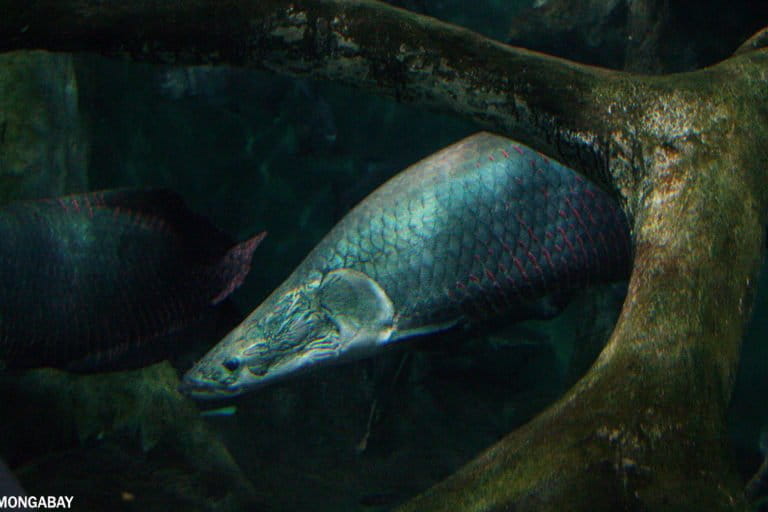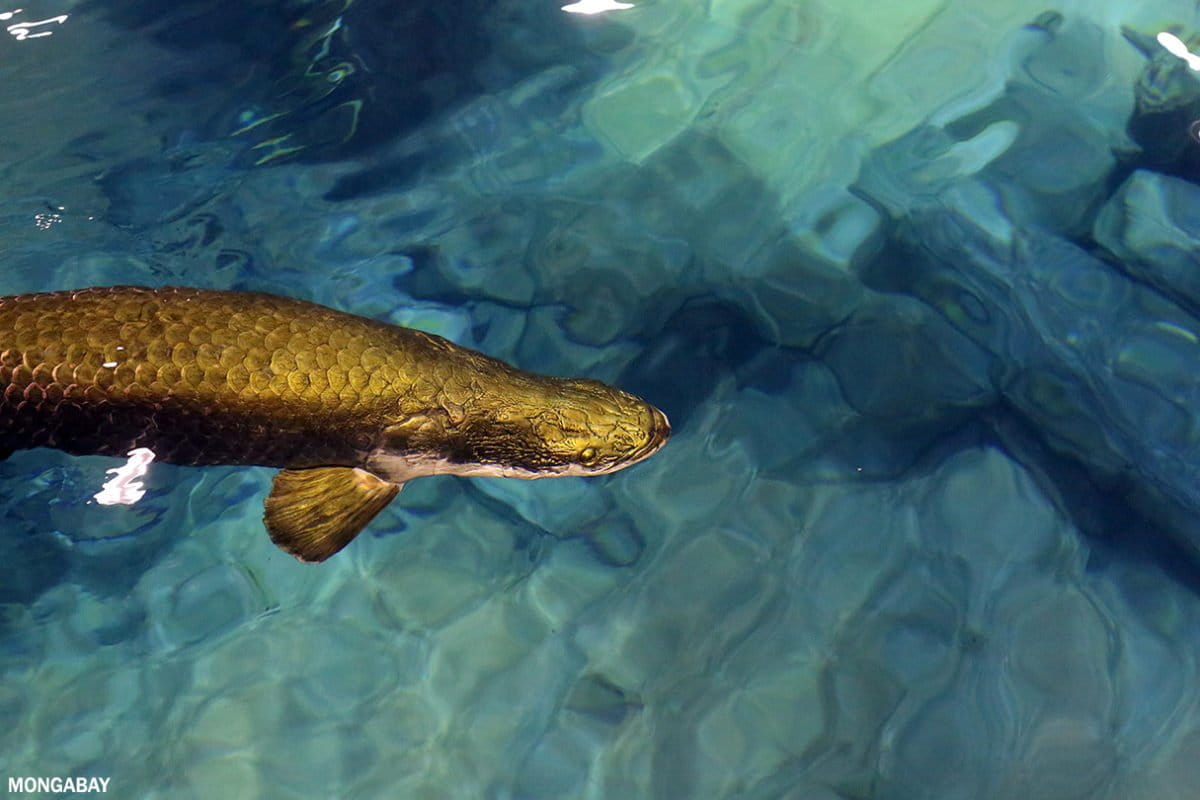- In February, Florida officials identified the body of an arapaima (Arapaima gigas) that had washed ashore from the Caloosahatchee River.
- An expert said the arapaima, a fish species endemic to the Amazon lowlands, had likely come from the pet trade.
- Live arapaimas are mainly brought into the U.S. for aquaculture, although a small number are also imported for the pet trade, another expert said.
- While arapaimas are not currently considered to be an invasive species, there are concerns they could become problematic in the future if enough end up in Florida’s waterways.
It’s been called a “river monster,” and for good reason. The arapaima (Arapaima gigas) is a freshwater fish that can grow longer than a horse and weigh up to 200 kilograms (440 pounds). The species lives in the waters that snake through the Amazon lowlands. But a couple of months ago, the rotting body of an arapaima washed ashore in south Florida, thousands of kilometers from its native territory.
In a statement provided to Mongabay, the Florida Fish and Wildlife Conservation Commission (FWC) said the arapaima had washed ashore from the Caloosahatchee River, which runs into the Gulf of Mexico, in February.
Matthew Neilson, a fishery biologist who works at the U.S. Geological Survey’s (USGS) Nonindigenous Aquatic Species Database, said there was no possibility the fish had traveled here on its own. The more likely explanation was that it had been dumped by an aquarium owner.

“Release from aquarium owners or from the pet trade is fairly common,” Neilson told Mongabay in an interview. “These are fish that will pop out at a very, very large size. The maximum length is almost 3 meters long, so you know, close to 10 feet, and close to 400 pounds at maximum size. Most people don’t have the facilities at home to be able to handle an organism of that size.”
It’s unclear why the arapaima died, but cold water may have been the culprit, Neilson said. Arapaimas can only tolerate water temperatures above 16° Celsius (60° Fahrenheit), and Florida had chiller than usual temperatures in February due to a local cold snap. However, it’s also possible that the fish had a bacterial infection, or had been released and caught again by a local fisher, resulting in some fishing trauma, Neilson said.
A small number of arapaimas are imported into the U.S. from Peru and Bolivia each year to be sold as pets to aquarium hobbyists, although the exact numbers are hard to come by, Jeff Hill, a professor at the University of Florida and the Institute of Food and Agricultural Sciences’ Tropical Aquaculture Laboratory, told Mongabay in an email. There are also a few thousand brought into the U.S. each year for aquaculture purposes, he added.
In the Amazon region itself, the arapaima has been historically exploited — but evidence shows that it’s recovering in most places “due to community-based management,” João Campos-Silva, an arapaima expert and postdoctoral fellow at the Norwegian University of Life Sciences, told Mongabay in an email. According to a paper he co-authored, arapaima populations in Brazil increased by about 425% in 11 years because of community-based protection of lakes.
Brazil does not allow exports of arapaima for the pet trade, although it may still happen illegally, Campos-Silva said.

In Florida, the arapaima is currently listed as a “conditional” species, meaning that you need an official permit to keep one. Another requirement is keeping them in a tank or outdoor facility that prevents escape or accidental release.
There are several public awareness campaigns in the U.S. to encourage people to make sure that nonindigenous species do not enter the water and spread, either accidentally or deliberately.
Neilson says the arapaima does have the potential to produce negative impacts on the local ecosystem, but only if it becomes established in the area.
“It’s hard to tell what species are going to become problematic,” he said. “A species can be relatively innocuous, and stay at a low density in one area for a while, and then something could change. We don’t necessarily know what that can be … so that’s why there’s always a big focus on prevention.”
Citations:
Campos-Silva, J. V., Hawes, J. E., & Peres, C. A. (2019). Population recovery, seasonal site fidelity, and daily activity of pirarucu (Arapaima spp.) in an Amazonian floodplain mosaic. Freshwater Biology, 64(7), 1255-1264. doi:10.1111/fwb.13301
Watson, L. C., & Stewart, D. J. (2020). Growth and mortality of the giant arapaima in Guyana: Implications for recovery of an over-exploited population. Fisheries Research, 231, 105692. doi:10.1016/j.fishres.2020.105692
Banner image caption: An arapaima captivity. Image by Rhett A. Butler
Elizabeth Claire Alberts is a staff writer for Mongabay. Follow her on Twitter @ECAlberts.
FEEDBACK: Use this form to send a message to the author of this post. If you want to post a public comment, you can do that at the bottom of the page.
